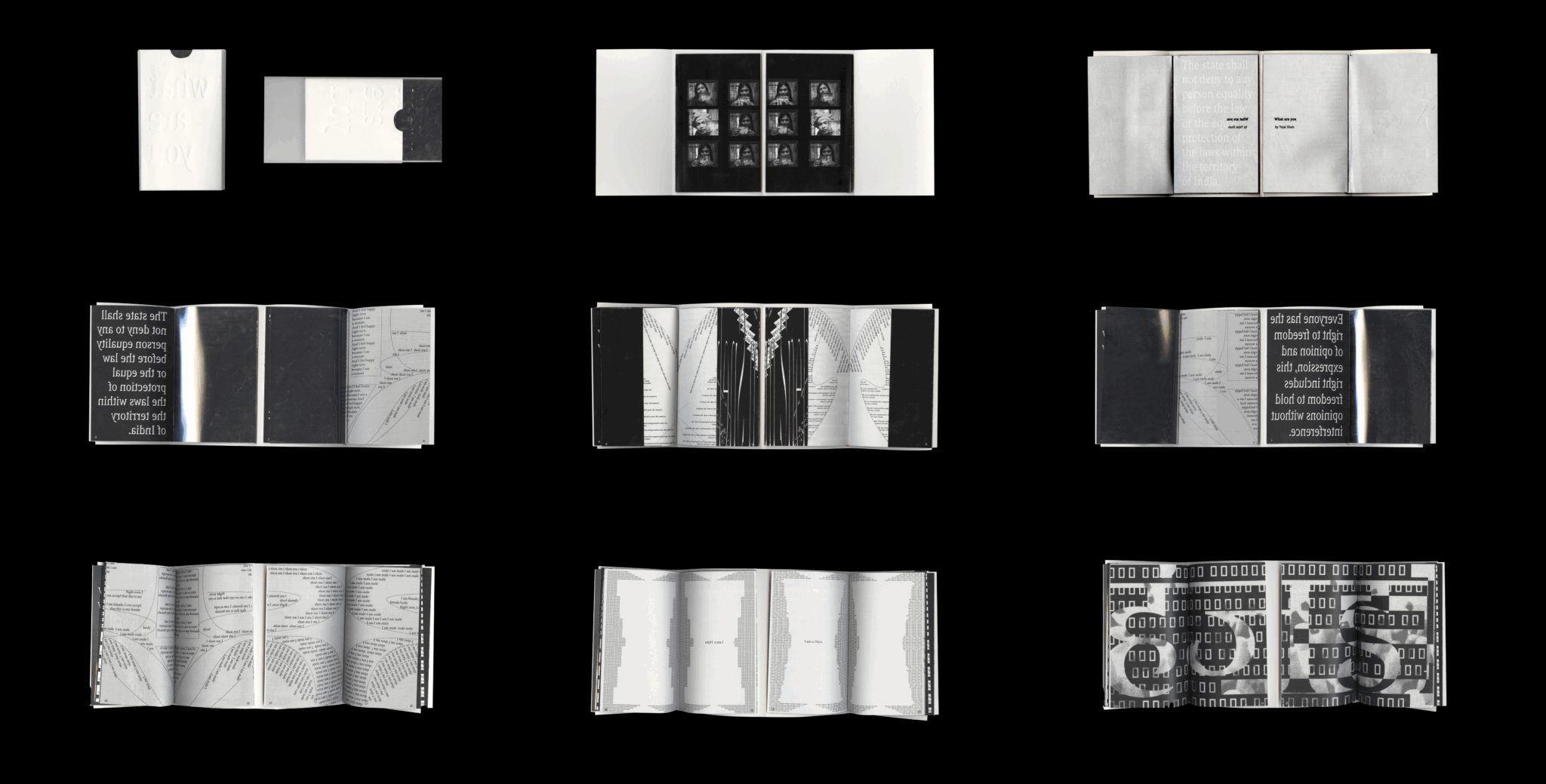We were lucky to catch up with Jyot Thind recently and have shared our conversation below.
Jyot, thanks for joining us, excited to have you contributing your stories and insights. Can you talk to us about how you learned to do what you do?
Curiosity and self-doubt. While self-doubt isn’t the typical starting point, it played a big role in my journey. I’ve been drawing since I was five and spent much of my life as a painter. But when I came to college, I became very self-critical. The vast creative community was inspiring but overwhelming, and it really changed my creative process. It became far more iterative, involving a lot more sketching and experimentation before settling on a final product. It was during this time that graphic design truly stood out to me.
I found graphic design as a medium allowed me to experiment and edit freely and rapidly, and I was hooked. In my first year, I struggled with knowing when to stop and how to choose the “right” version from my endless iterations. But this iterative process, while exhausting, has led to some of my best work. As a senior in graphic design, I’ve learned that the best way to grow is to let the idea lead you to the skills you need. Early on, I was afraid to take on projects I didn’t know how to execute, but now those are the ones that excite me most. The most essential skills in design, for me, are strategy and simplification—distilling complex ideas into their core.
At the end of the day, curiosity and learning, I believe, are inseparable. When I struggle, I step back and ask what excites me about the project. Focusing on learning rather than the final outcome has been key to my growth.
Jyot, before we move on to more of these sorts of questions, can you take some time to bring our readers up to speed on you and what you do?
I am a graphic designer from Chandigarh, India, currently completing my Bachelor’s in Graphic Design at the Rhode Island School of Design. My work is multi-disciplinary, blending digital and physical mediums to explore themes of language, accents, and nostalgia. My interest in accents began when I moved to the U.S. for my studies and became acutely aware of the different speech patterns around me. This experience made me curiosity about the social dynamics of language, both within India and globally, which I’ve been exploring for the past two years.
I enjoy translating my research and interests into visual and linguistic forms, including sound, typography, textiles, artist books, and motion design. I rely heavily on both visual and sonic stimuli to create my work, focusing on capturing experiences of transition. I also find great value in the repetition of patterns, as they help shape the meaning of my work and transform mundane experiences into something more engaging.
At the moment, I’m especially drawn to branding and developing identity systems, as they offer unique opportunities to foster conversation. Given my interest in exploring a variety of mediums within graphic design, I plan to work at a design studio after graduation that embraces this versatility and multidisciplinary approach.

What do you find most rewarding about being a creative?
Definitely, building relationships with other creatives. The connections formed through shared artistic work are truly invaluable. My work is deeply personal to me, and when I meet people who appreciate it and help nurture it, I am forever grateful. I believe the best work comes from open conversations and exposure to new ideas, and I feel incredibly lucky to be part of such a dynamic artist community that stimulates all your senses. My friends are incredibly talented in a wide range of fields, and much of my work is shaped by the conversations and experiences I share with them.

Is there something you think non-creatives will struggle to understand about your journey as a creative? Maybe you can provide some insight – you never know who might benefit from the enlightenment.
As the only creative in my family, even after four years of being a designer, they still don’t fully understand what I do. Believe me, I’ve tried explaining it. I think the confusion often arises when people see a designer or artist working across different subjects and mediums. To some, this can seem inconsistent. But the truth is, creative practices are inherently fluid, and that’s what I love about them. I embrace this fluidity and enjoy working across various mediums, subjects, and visuals. While the core language of my work remains consistent, as a graphic designer, it’s important to be fluent in various visual languages and perspectives to connect with a broader range of ideas and audiences.


Contact Info:
- Website: jyotkaurportfolio.cargo.site
- Instagram: jyotkaurthind


